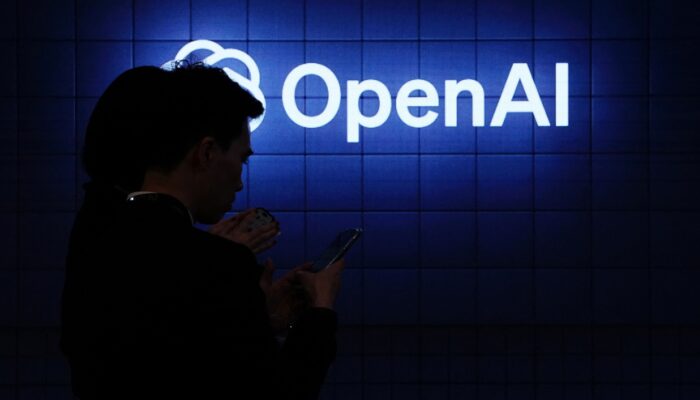Before Duolingo wiped its videos from TikTok and Instagram in mid-May, social media engagement was one of the language-learning app’s most recognizable qualities. Its green owl mascot had gone viral multiple times and was well known to younger users—a success story other marketers envied.
But, when news got out that Duolingo was making the switch to become an “AI-first” company, planning to replace contractors who work on tasks generative AI could automate, public perception of the brand soured.
Young people started posting on social media about how they were outraged at Duolingo as they performatively deleted the app—even if it meant losing the precious streak awards they earned through continued, daily usage. The comments on Duolingo’s TikTok posts in the days after the announcement were filled with rage, primarily focused on a single aspect: workers being replaced with automation.
The negative response online is indicative of a larger trend: Right now, though a growing number of Americans use ChatGPT, many people are sick of AI’s encroachment into their lives and are ready to fight back.
When reached for comment, Duolingo spokesperson Sam Dalsimer stressed that “AI isn’t replacing our staff” and said all AI-generated content on the platform would be created “under the direction and guidance of our learning experts.” The company’s plan is still to reduce its use of non-staff contractors for tasks that can be automated using generative AI.
Duolingo’s embrace of workplace automation is part of a broad shift within the tech industry. Leaders at Klarna, a buy now, pay later service, and Salesforce, a software company, have also made sweeping statements about AI reducing the need for new hires in roles like customer service and engineering. These decisions were being made at the same time as developers sold “agents,” which are designed to automate software tasks, as a way to reduce the amount of workers needed to complete certain tasks.
Still, the potential threat of bosses attempting to replace human workers with AI agents is just one of many compounding reasons people are critical of generative AI. Add that to the error-ridden outputs, the environmental damage, the potential mental health impacts for users, and the concerns about copyright violations when AI tools are trained on existing works.
Many people were initially in awe of ChatGPT and other generative AI tools when they first arrived in late 2022. You could make a cartoon of a duck riding a motorcycle! But soon artists started speaking out, noting that their visual and textual works were being scraped to train these systems. The pushback from the creative community ramped up during the 2023 Hollywood writer’s strike, and continued to accelerate through the current wave of copyright lawsuits brought by publishers, creatives, and Hollywood studios.
Right now, the general vibe aligns even more with the side of impacted workers. “I think there is a new sort of ambient animosity towards the AI systems,” says Brian Merchant, former WIRED contributor and author of Blood in the Machine, a book about the Luddites rebelling against worker-replacing technology. “AI companies have speedrun the Silicon Valley trajectory.”
Before ChatGPT’s release, around 38 percent of US adults were more concerned than excited about increased AI usage in daily life, according to the Pew Research Center. The number shot up to 52 percent by late 2023, as the public reacted to the speedy spread of generative AI. The level of concern has hovered around that same threshold ever since.
Ethical AI researchers have long warned about the potential negative impacts of this technology. The amplification of harmful stereotypes, increased environmental pollution, and potential displacement of workers are all widely researched and reported. These concerns were often previously reserved to academic discourse and online leftists paying attention to labor issues.
As AI outputs continued to proliferate, so did the cutting jokes. Alex Hanna, coauthor of The AI Con and director of research at the Distributed AI Research Institute, mentions how people have been “trolling” in the comment sections of YouTube Shorts and Instagram Reels whenever they see AI-generated content in their feeds. “I’ve seen this on the web for a while,” she says.
This generalized animosity towards AI has not abated over time. Rather, it’s metastasized. LinkedIn users have complained about being constantly prompted with AI-generated questions. Spotify listeners have been frustrated to hear AI-generated podcasts recapping their top-listened songs. Reddit posters have been upset to see AI-generated images on their microwavable noodles at the grocery store.
Tensions are so high that even the suspicion of AI usage is now enough to draw criticism. I wouldn’t be surprised if social media users screenshotted the em dashes in this piece—a supposed giveaway of AI-generated text outputs—and cast suspicions about whether I used a chatbot to spin up sections of the article.
A few days after I first contacted Duolingo for comment, the company hid all of its social media videos on TikTok and Instagram. But, soon the green owl was back online with a satirical post about conspiracy theories. “I’ve had it with the CEOs and those in power. It’s time we show them who’s in charge,” said a person wearing a three-eyed Duolingo mask. The video uploaded right afterwards was a direct message from the company’s CEO attempting to explain how humans would still be working at Duolingo, but AI could help them produce more language learning courses.
While the videos got millions of views on TikTok, the top comments continued to criticize Duolingo for AI-enabled automation: “Keep in mind they are still using AI for their lessons, this doesn’t change anything.”
This frustration over AI’s steady creep has breached the container of social media and started manifesting more in the real world. Parents I talk to are concerned about AI use impacting their child’s mental health. Couples are worried about chatbot addictions driving a wedge in their relationships. Rural communities are incensed that the newly built data centers required to power these AI tools are kept humming by generators that burn fossil fuels, polluting their air, water, and soil. As a whole, the benefits of AI seem esoteric and underwhelming while the harms feel transformative and immediate.
Unlike the dawn of the internet where democratized access to information empowered everyday people in unique, surprising ways, the generative AI era has been defined by half-baked software releases and threats of AI replacing human workers, especially for recent college graduates looking to find entry-level work.
“Our innovation ecosystem in the 20th century was about making opportunities for human flourishing more accessible,” says Shannon Vallor, a technology philosopher at the Edinburgh Futures Institute and author of The AI Mirror, a book about reclaiming human agency from algorithms. “Now, we have an era of innovation where the greatest opportunities the technology creates are for those already enjoying a disproportionate share of strengths and resources.”
Not only are the rich getting richer during the AI era, but many of the technology’s harms are falling on people of color and other marginalized communities. “Data centers are being located in these really poor areas that tend to be more heavily Black and brown,” Hanna says. She points out how locals have not just been fighting back online, but have also been organizing even more in-person to protect their communities from environmental pollution. We saw this in Memphis, Tennessee, recently, where Elon Musk’s artificial intelligence company xAI is building a large data center with over 30 methane-gas-powered generators that are spewing harmful exhaust.
The impacts of generative AI on the workforce are another core issue that critics are organizing around. “Workers are more intuitive than a lot of the pundit class gives them credit for,” says Merchant. “They know this has been a naked attempt to get rid of people.” The next major shift in public opinion will likely follow previous patterns, occurring when broad swaths of workers feel further threatened and organize in response. And this time, the in-person protests may be just as big as the online backlash.




